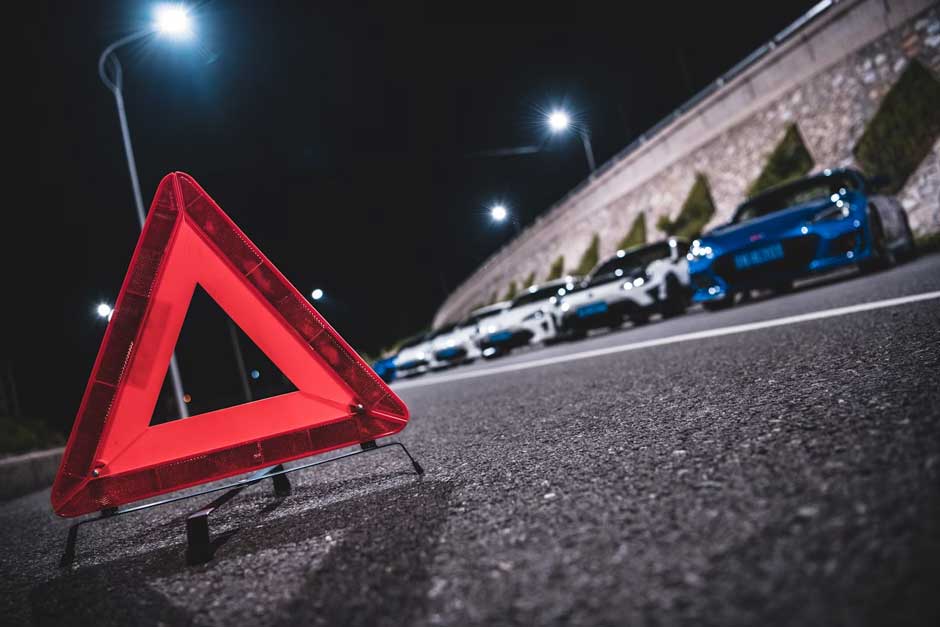Navigating Car Insurance Claims During Travel Emergencies

Car insurance claims during travel emergencies are one of the most stressful situations drivers face.
Getting stuck hundreds of miles from home with a damaged car is bad enough. But dealing with insurance companies, rental cars, and repairs in unfamiliar territory? That’s a whole different nightmare.
Here’s the problem:
Most drivers think their car insurance works exactly the same whether they’re in their driveway or 500 miles away. But that’s not true at all.
With 91% of US consumers planning domestic travel in 2024 and 30% already planning road trips, more people are finding themselves completely unprepared when travel emergencies strike.
Here’s what makes travel insurance claims so complicated:
Travel emergencies create unique challenges that can leave drivers stranded, confused, and potentially facing thousands in unexpected costs.
The good news?
Once you understand how car insurance claims work during travel emergencies, you can navigate them like a pro. If you need better coverage for your travels, you can click here to compare car insurance services that actually protect you when you’re away from home.
What you’ll learn:
- How Your Coverage Actually Works Away From Home
- The Exact Steps to Take When Travel Accidents Happen
- Why Roadside Assistance is Critical for Travelers
- Rental Car Coverage Secrets Most People Don’t Know
- How to Handle Out-of-State Insurance Claims
- Smart Ways to Prepare for Travel Emergencies
How Your Coverage Actually Works Away From Home
Here’s what most people don’t realize: Your car insurance does cover you in all 50 states and Canada. But the claim process gets way more complicated when you’re far from home.
Different states have completely different insurance laws.
If you’re carrying minimum coverage in your home state and crash in a state with higher requirements, your policy automatically bumps up to meet those minimums.
Here’s an example:
You live in Tennessee with basic coverage. You crash in a no-fault state like Michigan. Suddenly you have access to personal injury protection benefits you don’t normally carry.
But here’s the kicker…
Your policy limits stay exactly the same. So if you’re underinsured and disaster strikes, you could be in serious financial trouble.
The Exact Steps to Take When Travel Accidents Happen
When you’re in an accident while traveling, time is everything. Here’s exactly what you need to do:
Step 1: Call 911 immediately
Don’t assume the accident is minor just because you can drive away. You need that official police report, especially when you’re out of state.
Step 2: Document absolutely everything
Take photos of all damage, get the other driver’s full information, and collect witness contact details. This is critical because you can’t easily come back to the scene later.
Step 3: Contact your insurance company right away
Most insurers have 24/7 claim reporting. The faster you report, the smoother your claim process will be.
Step 4: Never admit fault
Stick to the facts when talking to police and other parties. Let the insurance companies figure out who’s responsible.
Step 5: Get medical attention
Even if you feel fine, some injuries don’t show symptoms for days. This is especially important when you’re far from your regular doctors.
Step 6: Keep every single receipt
Document all emergency expenses like towing, temporary repairs, hotel stays, and food costs.
It really is that simple when you know the right steps.
Why Roadside Assistance is Critical for Travelers
Here’s something most people don’t think about: Roadside assistance isn’t just nice to have when you’re traveling. It’s absolutely essential.
The global roadside assistance market hit $31.9 billion in 2023, and there’s a good reason it’s growing so fast.
Here’s why roadside assistance matters more during travel:
Travel breakdowns happen at the worst possible times. Q3 has the most roadside events (27% of all annual incidents) because that’s when people take summer road trips.
Plus, flat tire tow requests increased 6% in 2024 compared to 2023. Why? Because newer vehicles don’t include spare tires anymore.
Here’s the truth:
When your car dies 300 miles from home on a Sunday night, you can’t just call your regular mechanic. Roadside assistance connects you with local help and covers towing, jump-starts, flat tire changes, fuel delivery, and lockout assistance.
Many policies include trip interruption benefits that cover up to $500 for meals and lodging if your car breaks down more than 100 miles from home.
Pretty cool, right?
Rental Car Coverage Secrets Most People Don’t Know
Getting stranded without transportation during a trip can completely ruin your vacation.
Here’s where rental car coverage becomes absolutely critical:
Regular rental reimbursement coverage helps when your car is being repaired at home. But travel situations are totally different.
You might need immediate replacement transportation to continue your trip, extended rental periods while waiting for parts in unfamiliar areas, one-way rentals to get home if your car is totaled, or different vehicle types depending on your travel needs.
But here’s what most people don’t know…
Standard rental coverage often has daily limits (usually $30-50 per day) that won’t cover the higher costs of emergency rentals in tourist areas.
Some policies also limit where you can rent. If you’re stuck in a small town with limited options, you could face huge out-of-pocket costs.
Pro tip: Many credit cards offer rental car coverage, but it’s usually secondary to your auto insurance and requires you to decline the rental company’s collision damage waiver.
How to Handle Out-of-State Insurance Claims
Filing insurance claims across state lines creates challenges most drivers never even think about.
Here are the biggest issues you’ll face:
Different state laws – No-fault states handle claims completely differently than tort states. You might find yourself dealing with processes you’ve never encountered.
Local repair networks – Your insurer might not have preferred shops in the area, leading to longer wait times or higher costs.
Communication nightmares – Coordinating between adjusters, repair shops, and rental companies gets complicated when everyone’s in different time zones.
Follow-up headaches – Getting your car fixed might require multiple trips back to the accident location or shipping paperwork across state lines.
Here’s what makes it way easier:
Choose insurers with strong national networks. Companies with adjusters and preferred repair facilities nationwide handle your claim much more efficiently.
Keep digital copies of all your documents. You’ll need your insurance cards, driver’s license, and other paperwork available instantly.
Smart Ways to Prepare for Travel Emergencies
The best time to deal with travel insurance emergencies is before they happen.
Here’s what you need to do before you hit the road:
Review your coverage limits – Ensure adequate liability, comprehensive, and collision coverage.
Update your emergency information – Keep your insurance company contact details current.
Download your insurer’s mobile app – File claims and track progress from anywhere.
Research your route – Know state insurance requirements along your path.
Pack an emergency kit – Include insurance cards, contacts, phone charger, and first aid supplies.
Consider additional coverage – Gap insurance and roadside assistance are more valuable when traveling.
Know your policy inside and out – Understand your deductibles, coverage limits, and what’s excluded before you need them.
Here’s the reality:
With 4.2 collision claims per 100 drivers annually, the odds say you’ll eventually need to use your insurance. When that happens during travel, preparation makes all the difference.
Wrapping It Up
Navigating car insurance claims during travel emergencies doesn’t have to be a complete disaster. The key is understanding how your coverage actually works away from home and preparing for the unique challenges travel creates.
Remember these critical points:
Your insurance travels with you, but state laws and claim processes vary wildly. Immediate documentation and reporting are crucial when you can’t return to the scene. Roadside assistance and rental coverage become essential when you’re far from home. Preparation beats panic every single time.
With more Americans taking road trips than ever before, smart travelers know that proper insurance coverage isn’t optional. It’s the foundation of worry-free travel.
Don’t wait until you’re stranded on the side of the road to discover coverage gaps. Review your policy today and make sure you’re protected wherever the road takes you.


